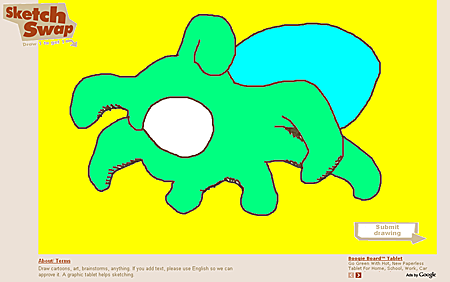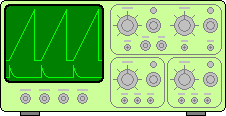
Day: June 19, 2010
Art Power
Am reading Boris Groys' book Art Power and will attempt to take some notes as I go.
Based on three chapters:
-He is good at working through the contradictions of contemporary art--e.g., the continued enshrinement of objects in an age of Enlightenment egalitarianism, the classification of marketed art as "art" and the art of totalitarian societies as "not art"--and his standard rhetorical trick is to pile one nonsensical idea that we're all in denial about on top of another in a very logical manner and then to pull the rug out with some "aha" inversion that shows the shaky structure clearly. A few too many of these moments in a single chapter leaves the reader groping for some foundation, however.
-The best chapter so far is "On the New," where he explains the function of the museum as a place where real readymades (Duchamp) and fake readymades (Fischli/Weiss) are collected to provide some perspective on rapidly-changing objects and fashions outside the museum. Even the collected objects have a shelf life and will eventually be discarded, but their existence in a privileged space allows us to recognize the new, which he distinguishes from the merely different, perversely quoting Kierkegaard's leap of faith about the godly nature of Jesus Christ (who looks like a man, just as Duchamp's shovel looks like a shovel). Here's where the foundation starts swaying:
As I have mentioned, a new artwork cannot repeat the forms of old, traditional, already collected art. But today, to be really new, an artwork cannot even repeat the old differences between art objects and ordinary things. By means of repeating these differences, it is possible to create a different artwork, not a new artwork. The new artwork looks really new and alive only if it resembles, in a certain sense, every other ordinary, profane thing, or every other ordinary object of popular culture. Only in this case can the new artwork function as a signifier for the world outside the museum walls. The new can be experienced as such only if it produces an effect of out-of-bounds infinity--if it opens an infinite view on reality outside the museum. And this effect of infinity can be produced, or, better, staged, only inside the museum: in the context of reality itself we can experience the real only as finite because we ourselves are finite. The small, controllable space of the museum allows the spectator to imagine the world outside the museum's walls as splendid, infinite, ecstatic. This is, in fact, the primary function of the museum: to let us imagine what is outside the museum as infinite. New artworks function in the museum as symbolic windows opening onto a view of the infinite outside. But, of course, new artworks can fulfill this function for a relatively short period of time before becoming no longer new but merely different, their distance from ordinary things having become, with time, too obvious. The need then emerges to replace the old new with the new new, in order to restore the romantic feeling of the infinite real.
This is a lot of fun but basically insane. Am looking forward to similar convolutions in the later chapter "From Image to Image File--and Back: Art in the Age of Digitalization."
sonar-radar combo


from my dump.fm page. GIFs found by unicorngirl (left) and sorry-i-forgot-who (right)
The Fave of Death
More from the discussion on Paddy Johnson's blog of the Guggenheim Museum's call-for-entries for artists to make YouTubes that will be judged and exhibited as art. The museum's teaser video is just awful.
Commenter Paul Slocum says: "I’ve decided that instead of submitting something myself, I’m going to contact producers on Youtube who are true to the spirit of Youtube and deserve recognition, and urge them to submit specific videos to the contest. Rally, y’all."
My reply to that:
Here are my YouTube faves. Paul Slocum has a good idea of encouraging producers we like to submit but after watching that Guggenheim call-for-submissions video again I wouldn’t wish that process on my worst enemies. Normal video pausing into pseudo-glitchy jitter, gratuitous sped-up city scenes, quasi-8 bit music, a groovy fake Yellow Submarine sequence, stop-motion graffiti oozing off the wall and strutting around: the full panoply of effects a 30-something high paid art director would create to conjure happenin’ youth. By contrast, the work in the above faves list is no-budget, sincere, incomprehensible, vague, “weak,” anti-YouTube, no-style, slight, non-corporate, etc (but also brilliant). Recall what happened when Guthrie Lonergan curated a group of touchingly inept MySpace intros on YouTube. The work got duller when it was linked to directly by Rhizome.org and even duller when shown on professional gear at the New Museum. The work I love most would shrivel in the institutional spotlight and I shudder to think of a techie explaining to Silicious how to make a more polished use of Poser software.
Update: YouTube is constantly changing the size of the player window, such that pieces that need to be full bleed suddenly acquire annoying letterboxing. Just noticed that a few more pixels have been added to the width so that even the widescreen pieces a few months ago now have thin vertical black stripes on the right and left. The only kind of art anybody should be making for this "medium" is shitty half-assed art that will somehow survive the hosts' regular tinkering.
Update, 2013: I closed the "Teleclysm" YouTube account over the "unitary identity" issue and general Google weirdness.
